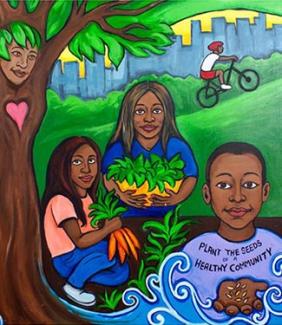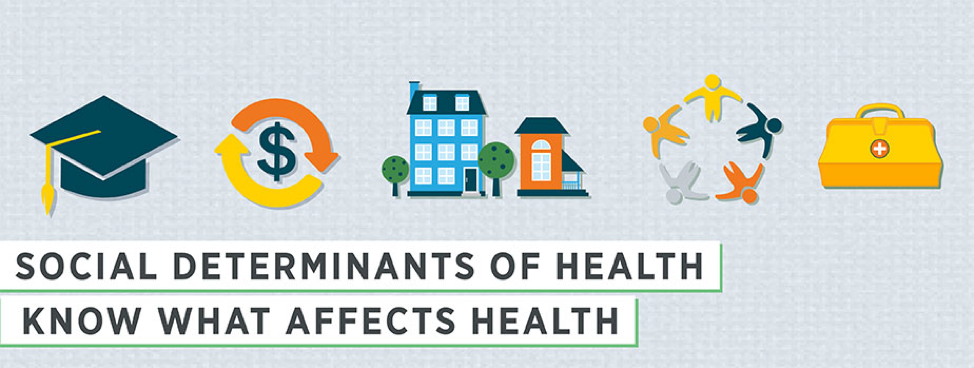By Mikaela Gerwin, Family Violence Prevention and Services Program Intern
I begin with Friday nights. Most Fridays of my childhood, my parents packed anywhere from five to fifteen guests into our home for dinner. Safely gathered around a single table, many familiar faces repeated similar concerns about the state of the country and our community, their families or even themselves. This communal environment encouraged vulnerability.
As a young woman, I am currently in the process of transitioning from the communities that raised me to those that future me will help construct. I think about the easy support of my family dinners, and how these nights helped strengthen larger communal discussions and infrastructures for support. We saw these guests outside of our house, in our neighborhood, Jewish temple, school, and apartment building. One year, eleven-year old me joined forces with neighbors in my community to urge intervention by our city council on behalf of a local business. We organized our issue and gathered 2,500 petition signatures. Despite our efforts, the business closed. From this experience I learned that the bonds created in my own home could be mobilized within the broader context of my neighborhood and community. My community impacted me and I impacted my community.
Intimate Partner Violence as a Community Problem
Not surprisingly, studies have demonstrated that female victims of intimate partner violence (IPV) have less supportive communities than their female counterparts who have not experienced IPV. Social isolation, a state of minimal contact between an individual and society or their community, is known to be linked to IPV. Furthermore, not only are women with adequate social support less likely to experience IPV, but female IPV victims with more social support and stronger communities are less likely to enter a second violent relationship. This body of literature on communities and IPV has led some experts to call for “making IPV a problem of the community rather than a problem between two individuals.”
This push to examine IPV within a community context is part of a larger effort to understand health risks and outcomes, such as IPV, from a social determinants of health (SDOH) framework. SDOH, or the conditions in the places where people live, learn, work, and play, affect a wide range of health risks and outcomes. Rather than focusing on physiological or epidemiological explanations for health outcomes, the SDOH lens is broader. Research has suggested that neighborhood, community, and economic stability are SDOHs that should inform our strategies for addressing and preventing IPV.
Community connectedness is a SDOH and specifically a protective factor against IPV. Being surrounded by strong community, including neighbors one interacts with and cares about, can provide a buffer against experiences and consequences of IPV. With this in mind, how can neighbors and domestic violence (DV) advocates together help bolster these strong spaces of social support for survivors?
Building Strong Communities
Let’s begin with some characteristics of a strong community – this social circle that can provide a victim with support. While there is no simple recipe for the perfect community, a synthesis of related research reveals some crucial components for creating strong communities.
The Knight Foundation and Gallup’s The Soul of the Community 2010 study was conducted over three years in twenty-six US cities with 46,000 diverse participants. Researchers found that strong communities are cultivated by:
- Social offerings — Places for people to meet each other and feel that people in the community care about each other (art and cultural centers, nightlife, community centers, etc.). Are there safe places near your program for survivors to experience these communal bonds?
- Openness —The welcoming nature of the community to different types of people, including families with young children, minorities, recent college graduates, and older adults. Is the community around your program diverse and welcoming? When you look around your community, what types of people do you see?
- Aesthetics — The physical beauty of the community including the availability of parks and green spaces. Are there parks or green spaces near your program that are safe for survivors to access?
- Education – Both primary (K-12) and secondary (college and above), as well as other opportunities for people to seek supplemental or ongoing education. In your community, what are the educational options for survivors and their children?
When survivors seek new surroundings or housing for themselves and their children, as an advocate you can help them identify communities with the above characteristics. When safety planning with survivors, you can consider their communal context, both present and future. Even a little bit of research about potential neighborhood characteristics can go a long way toward helping survivors feel safer and more connected. Details such as how far a survivor’s future home is from a park, art space or community center may seem trivial, but access to these physical spaces helps create community and build strong social supports that can promote safety and healing.
Individual participation in community also strengthens community. When neighbors take control of their own institutions, they enhance their communities. Neighbors, rather than politicians or government employees, know their community and its unique needs. Collaboration makes neighborhood efforts to protect the physical environment, better social services, prevent crime, and improve social conditions far more successful. Personal investment in a neighborhood, including engagement in local politics, strengthens communities. Particularly relevant to communities in special need of nurturing, individuals have the capacity to foster connection and hope throughout their community. In your role as an advocate, it may be helpful to discuss with survivors what they want improved in their neighborhood communities and the ways they may be empowered to work – and collaborate – to actualize these improvements.
Why Economic Health Matters
Communities, especially immediate neighborhood surroundings, also impact an individuals’ economic stability. A 2011 Prosperity Now survey of 11 cities, Building Economic Security in America’s Cities, showed that access to institutional and community resources – provided through government policies, employers, financial products and institutions, and education – largely determine economic security. A 2018 Center for Social Innovation report covering six communities, Supporting Partnerships for Anti-Racist Communities (SPARC): Phase One Study Findings, explored how a “lack of economic capital within social networks” perpetuates poverty, specifically as it disproportionately impacts people of color. The report found that for example, people do not generally become homeless simply because of a lack of individual financial resources. Rather, homelessness is a result of fragile social networks, of weak communities. The fragility of these communities is largely due to a collective lack of financial capital. The SPARC researchers termed this phenomenon “network impoverishment” to describe how it’s not just the individual or family that experiences poverty, rather the community itself functions in an impoverished state.
Poverty and IPV have been shown to co-occur frequently, produce parallel effects, and, when working in tandem, constrain survivors’ options for accessing safety and services. Literature has also established that community poverty and other measures of community disadvantage are associated with IPV specifically. In other words, this concept of “network impoverishment” clearly translates to IPV as well. Therefore, neighborhood economic stability is particularly relevant to the needs of IPV victims.
“Addressing socioeconomic factors holds great potential for improving a wide range of health outcomes for neighborhoods, communities and states and also has the potential to prevent IPV” (CDC, 2017). In fact, a five-year 2016 Pew study, Neighborhood Poverty and Financial Security, demonstrated that low-income residents in low-poverty neighborhoods have more financial security than similar households in higher-poverty communities. Although these households had nearly identical financial backgrounds, their surroundings had a clear influence on their economic security. Boosting the overall economic status of communities has a positive impact on all members.
As the CDC referenced in their 2017 technical packet, Preventing Intimate Partner Violence Across the Lifespan, there are many specific programs and policies that improve individual, family, and community economic security. Beginning on page 33, this packet identifies a number of such programs and policies. For example, tax credits, equal pay, paid leave, micro-finance initiatives and other similar interventions can make a clear economic difference in a community. As an advocate, you can be involved in promoting these policies in your own community and inspire survivors to do the same.
Investing in Community
A focus on the community’s role in preventing IPV allows for an examination of domestic violence from a more holistic, SDOH-conscious perspective. When offering domestic violence services, it is important to work and safety plan within the context of the survivor’s current and future community, and to leverage community strengths to support well-being.
Ultimately, our communities shape us and we shape them. Advocates cannot fully serve survivors without emboldening both survivors and themselves to invest in the well-being of their respective communities. From volunteering on school boards, advocating for the construction of local parks or even simply smiling at our neighbors, there is no limit to the ways we all can work to strengthen our communities.
What potential do you see for strong, communities to prevent and intervene in DV situations? As an advocate, how will you consider the role community plays in survivors’ lives?
Helpful Resources:
- Preventing Intimate Partner Violence from the Centers for Disease Control and Prevention
- Social Determinants of Health: Know What Affects Health from the Centers for Disease Control and Prevention
- The Difference Between Surviving and Not Surviving: Public Benefits Programs and Domestic and and Sexual Violence Victims’ Economic Security from the National Resource Center on Domestic Violence
- Poverty, Domestic Violence, Social Inequity: What the New Poverty Data Tells Us About Addressing Domestic & Sexual Violence from the Center for Survivor Agency and Justice
- Preventing Intimate Partner Violence Across the Lifespan: A Technical Package of Programs, Policies, and Practices from the Centers for Disease Control and Prevention
- Resources to Support the CDC’s Technical Package: Preventing Intimate Partner Violence Across the Lifespan from the National Resource Center on Domestic Violence
- THRIVE: A Framework for Understanding the Community Determinants of Intimate Partner Violence from Prevention Institute & National Resource Center on Domestic Violence
- The Community Resilience Cookbook from the Health Federation of Philadelphia
- Awareness + Action = Social Change from the National Resource Center on Domestic Violence
Featured image: Plant the Seeds of a Healthy Community from Groundswell's "Visions of a Healthy Community" mural project.
Social Determinants of Health Image comes from CDC's Social Determinants of Health: Know What Affects Health.
















